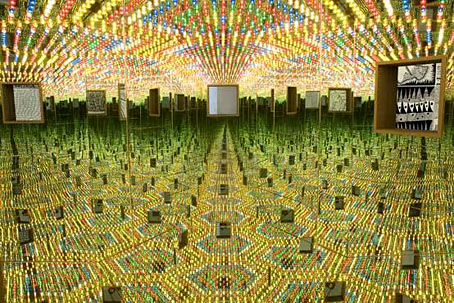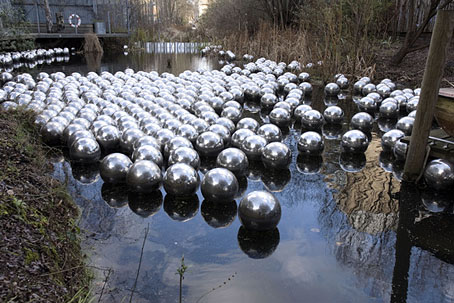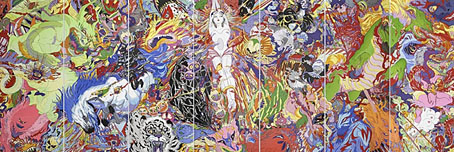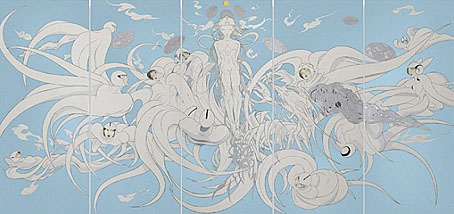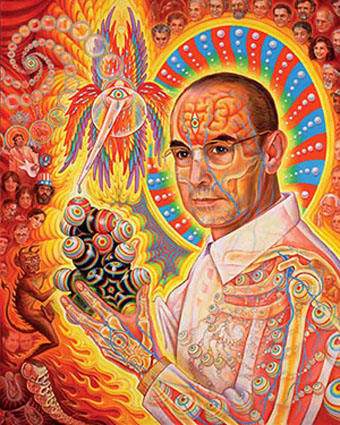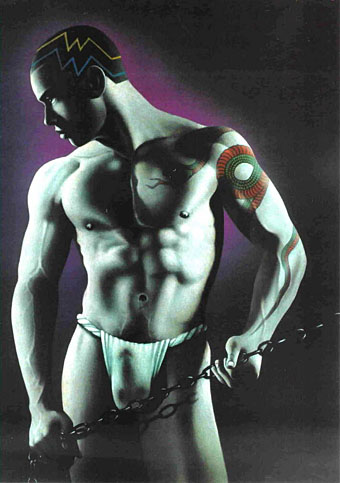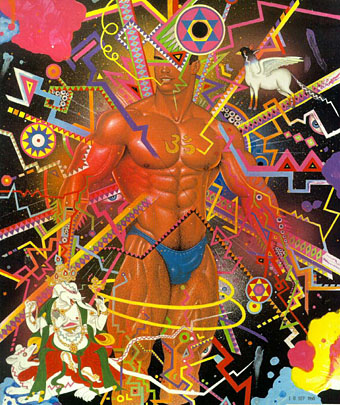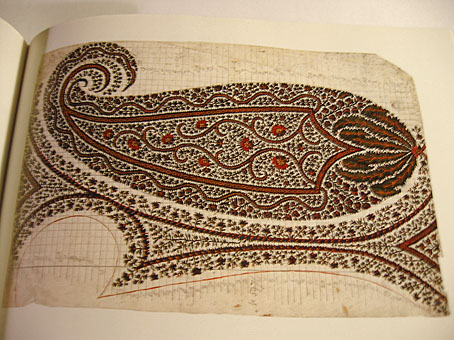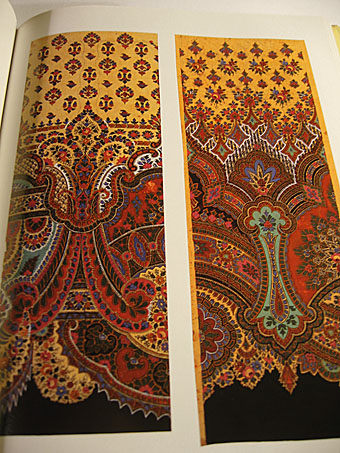Infinity Mirrored Room—Love Forever (1994).
“It is not controversial to describe Yayoi Kusama as Japan’s greatest living artist,” says Hannah Duguid in The Independent. I made a post about Kusama’s artworks in 2006 and now her work is in exhibition at the Victoria Miro gallery, London.
For this exhibition, revered Japanese artist Yayoi Kusama has conceived a new installation Dots Obsession—Infinity Mirrored Room (2008) especially for the upper gallery and in the lower galleries will install 50 new silkscreen works that will be shown alongside two significant sculptural pieces from the early nineties. At Victoria Miro 14 the artist will present a series of new dot paintings and an environmental installation I’m Here, but Nothing (2000-2008). The exhibition will continue outside the gallery where Kusama will install one of her most infamous works, Narcissus Garden in Regents Canal—a work which has never before been exhibited in the UK.
More pictures here. The exhibition runs until 20 March, 2008
Narcissus Garden (1966—2008).
Previously on { feuilleton }
• Maximum Silence by Giancarlo Neri
• The art of Yayoi Kusama
• Atomix by Nike Savvas

